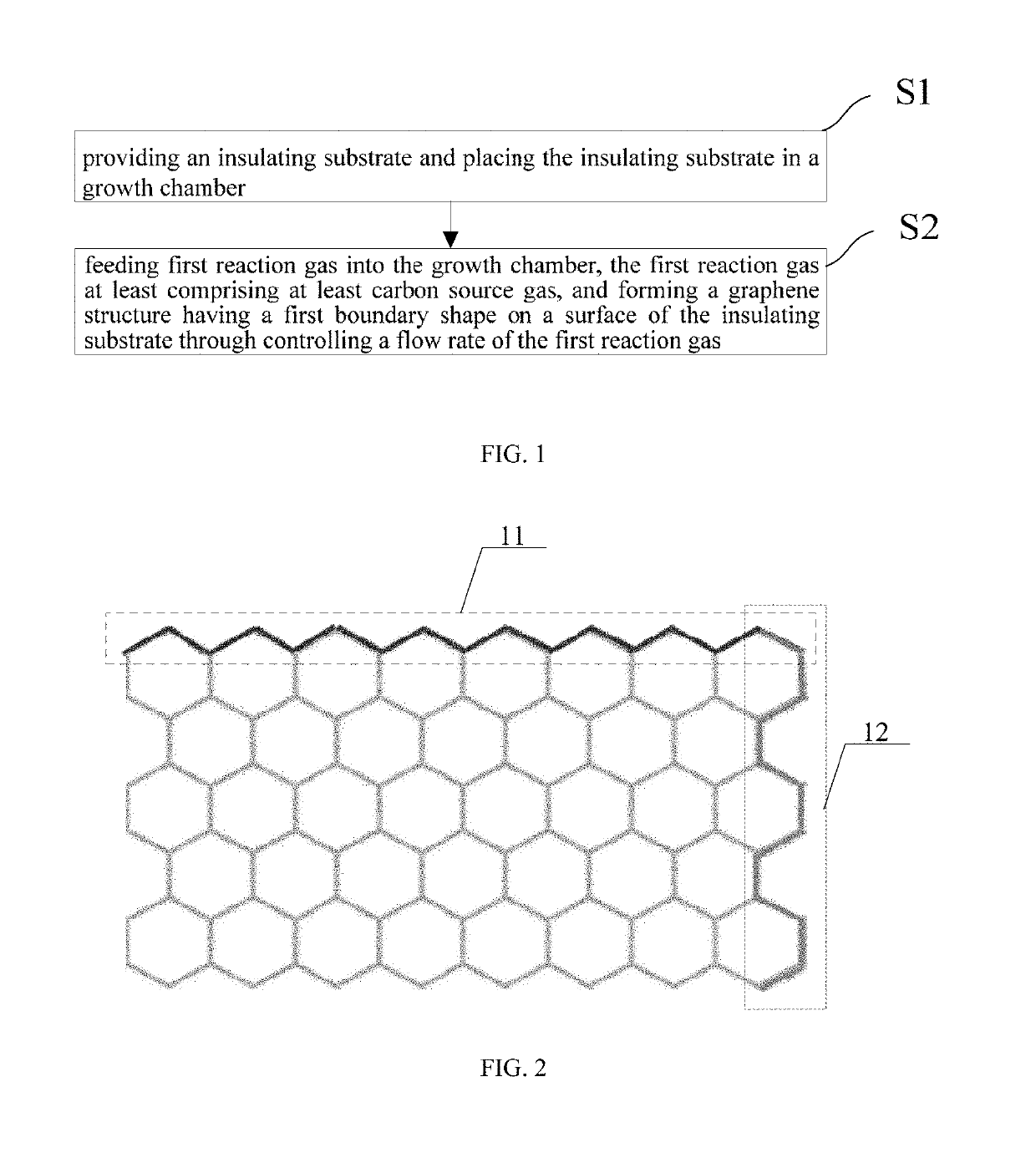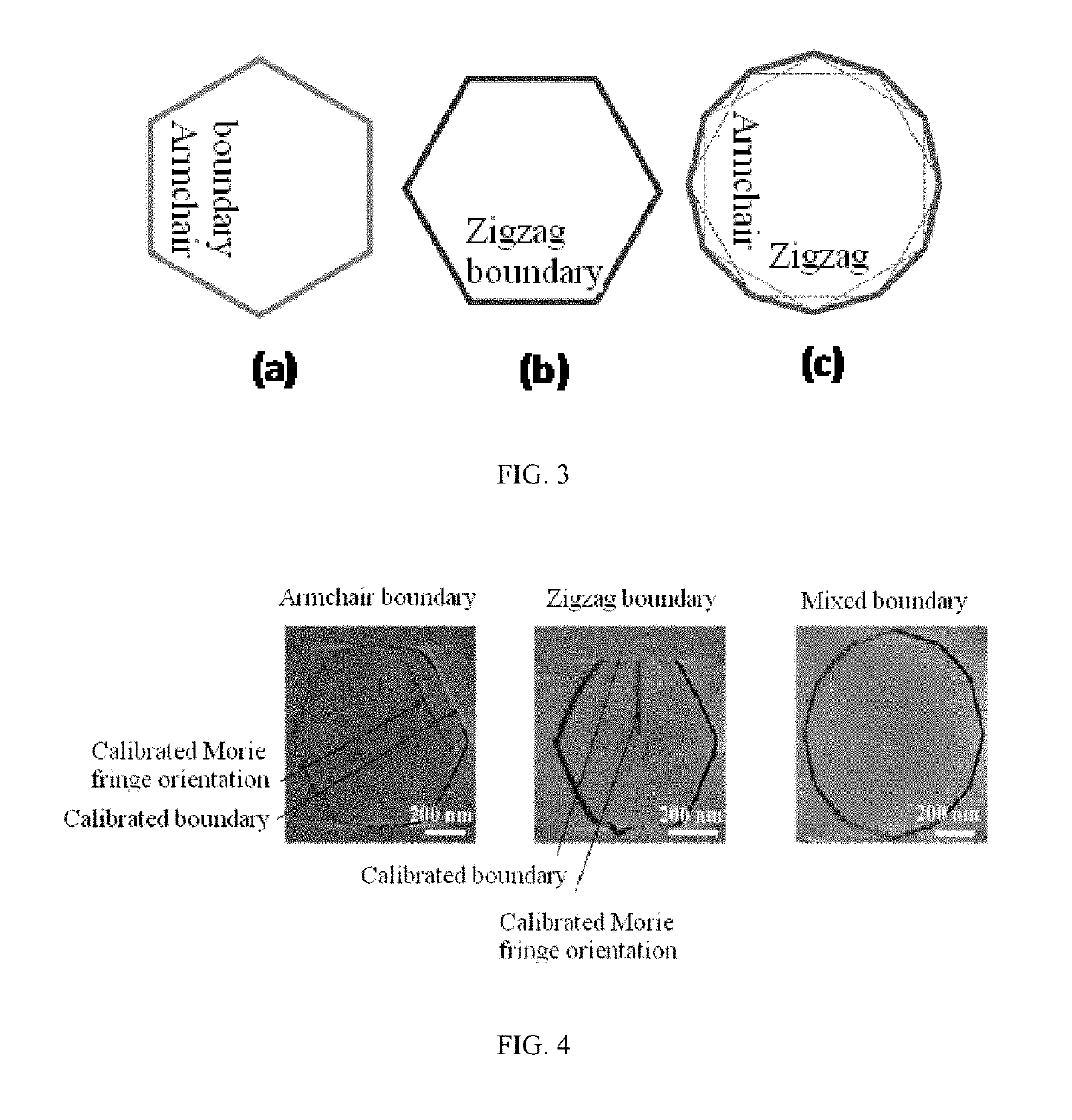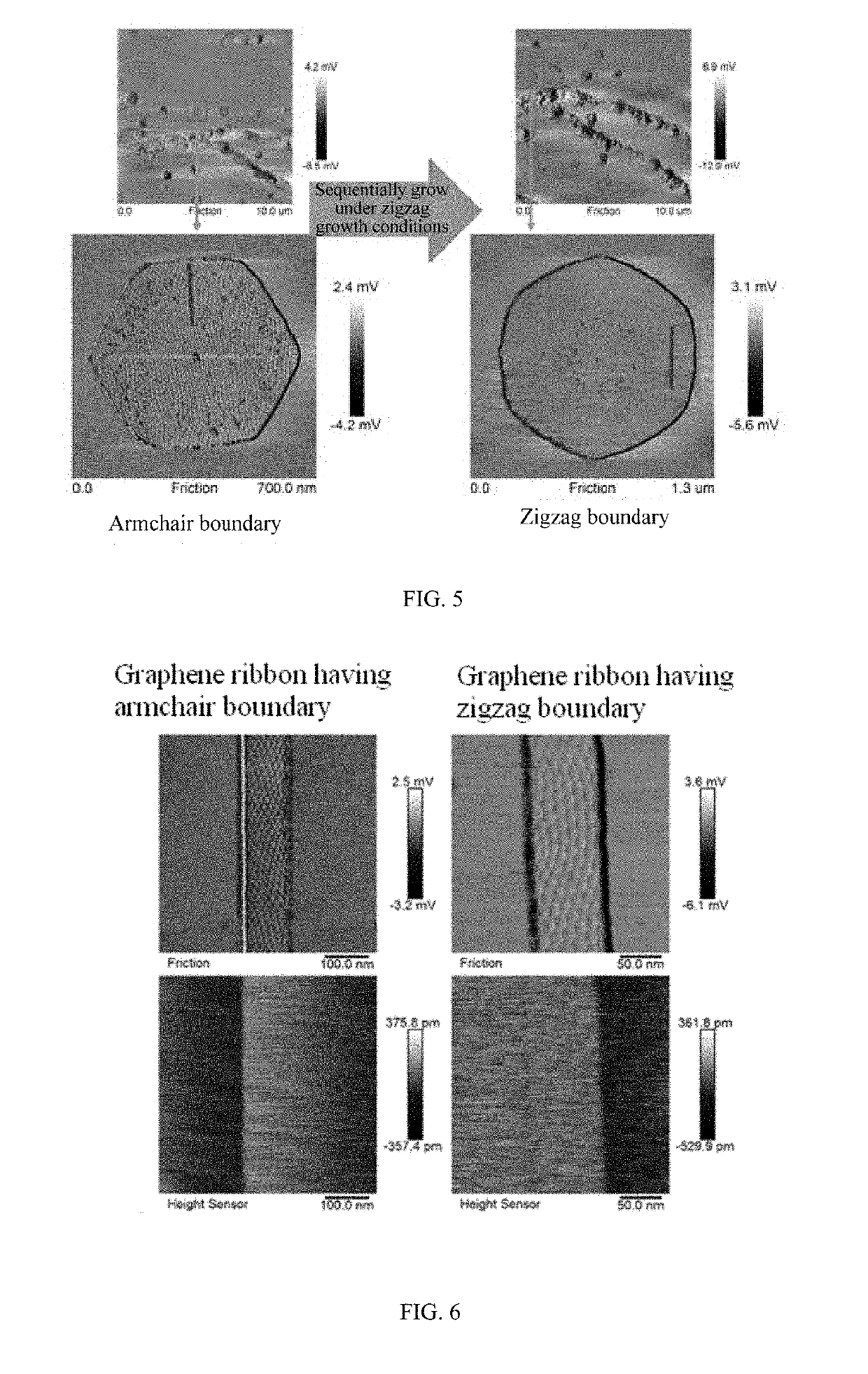Method for adjusting and controlling boundary of graphene
- Summary
- Abstract
- Description
- Claims
- Application Information
AI Technical Summary
Benefits of technology
Problems solved by technology
Method used
Image
Examples
embodiment 1
[0068]In this embodiment, a graphene structure having an armchair boundary can be obtained by controlling the flow rate of the first reaction gas, the graphene structure may be graphene monocrystal or graphene nanoribbon.
[0069]As an example, in step 2), the first reaction gas only comprises carbon source gas.
[0070]Specifically, in this embodiment, the carbon source gas which exists only is preferably acetylenegas, and specific operations for forming graphene having an armchair boundary comprise: feeding carbon source gas, i.e., acetylene, wherein a flow rate is selected to be 8 sccm, a pressure range is regulated to be 1-20 Pa and is selected to be 10 Pa in this embodiment, temperature is regulated to be within 1100-1400° C. and is selected to be 1200° C. in this embodiment, growth time is 10-18 min and is selected to be 15 min, so as to obtain graphene monocrystal having an armchair boundary and having a size of 1 μm (diagonal length of hexagonal graphene monocrystal).
[0071]As an e...
embodiment 2
[0074]In this embodiment, a graphene structure having a zigzag boundary can be obtained by controlling the flow rate of the first reaction gas, the graphene may be graphene monocrystal or graphene nanoribbon.
[0075]As an example, the first reaction gas comprises carbon source gas and catalytic gas, and the flow rate ratio of the carbon source gas to the catalytic gas is controlled to obtain graphene having a zigzag boundary.
[0076]Specifically, a flow rate ratio of the catalytic gas to the carbon source gas is controlled to be equal to 1:1, i.e., the flow rate is 1 sccm: 1 sccm, 8 sccm:8 sccm or the like, so as to obtain a graphene structure having the first boundary shape of zigzag. In this embodiment, the carbon source gas is selected to be acetylene, the catalyst is selected to be silane, i.e., when the ratio of acetylene to silane is 8:8, a zigzag boundary is obtained, or when the flow rate of silane and acetylene is simultaneously changed within a flow rate range of 1-7, a zigzag...
embodiment 3
[0078]In this embodiment, a graphene structure having a secondary boundary shape can be obtained by controlling the flow rate of the second reaction gas, i.e., in this embodiment, the original boundary shape of graphene can be changed by controlling the flow rate of the reaction gas, e.g., the boundary shape of graphene in embodiment 1 can be changed to the boundary shape of graphene in embodiment 2, and the boundary of graphene in embodiment 2 can also be changed to the boundary shape of graphene in embodiment 1.
[0079]Specifically, if the first boundary shape is an armchair shape, the second reaction gas is controlled to be reaction gas which is suitable for growth of a zigzag boundary, so as to obtain the graphene structure having the second boundary shape of zigzag; and if the first boundary shape is an zigzag shape, the second reaction gas is controlled to be reaction gas which is suitable for growth of an armchair boundary, so as to obtain the graphene structure having the seco...
PUM
 Login to View More
Login to View More Abstract
Description
Claims
Application Information
 Login to View More
Login to View More - R&D
- Intellectual Property
- Life Sciences
- Materials
- Tech Scout
- Unparalleled Data Quality
- Higher Quality Content
- 60% Fewer Hallucinations
Browse by: Latest US Patents, China's latest patents, Technical Efficacy Thesaurus, Application Domain, Technology Topic, Popular Technical Reports.
© 2025 PatSnap. All rights reserved.Legal|Privacy policy|Modern Slavery Act Transparency Statement|Sitemap|About US| Contact US: help@patsnap.com



